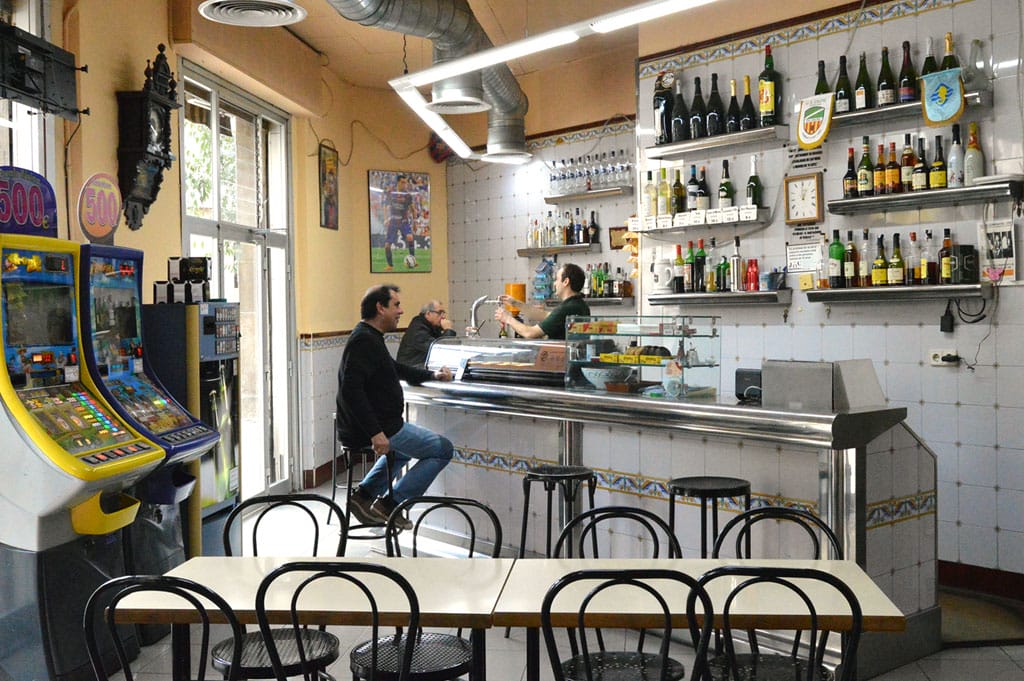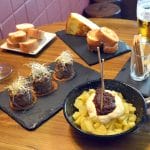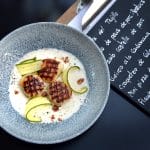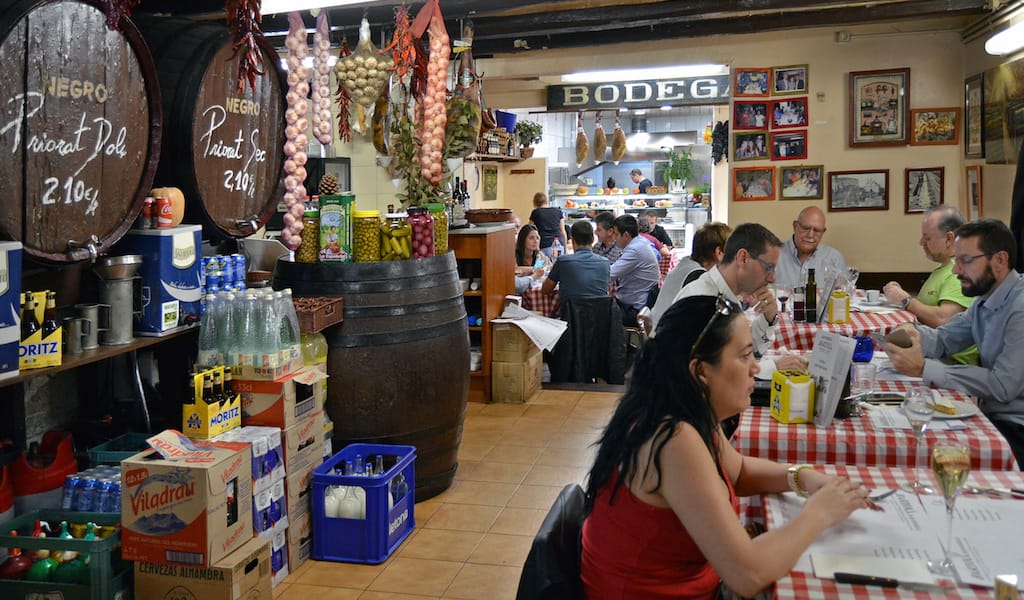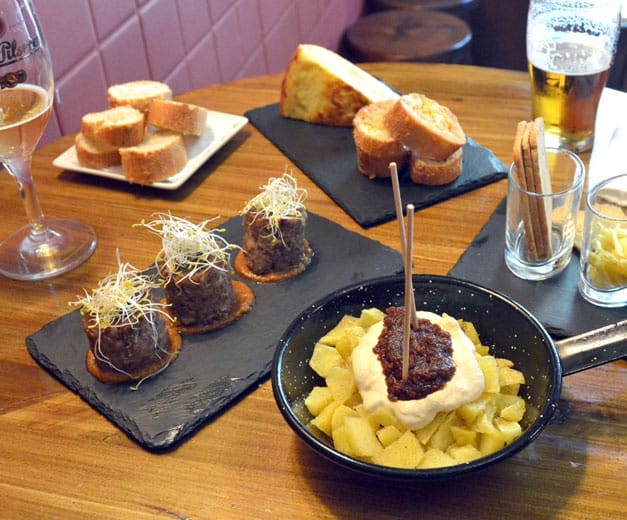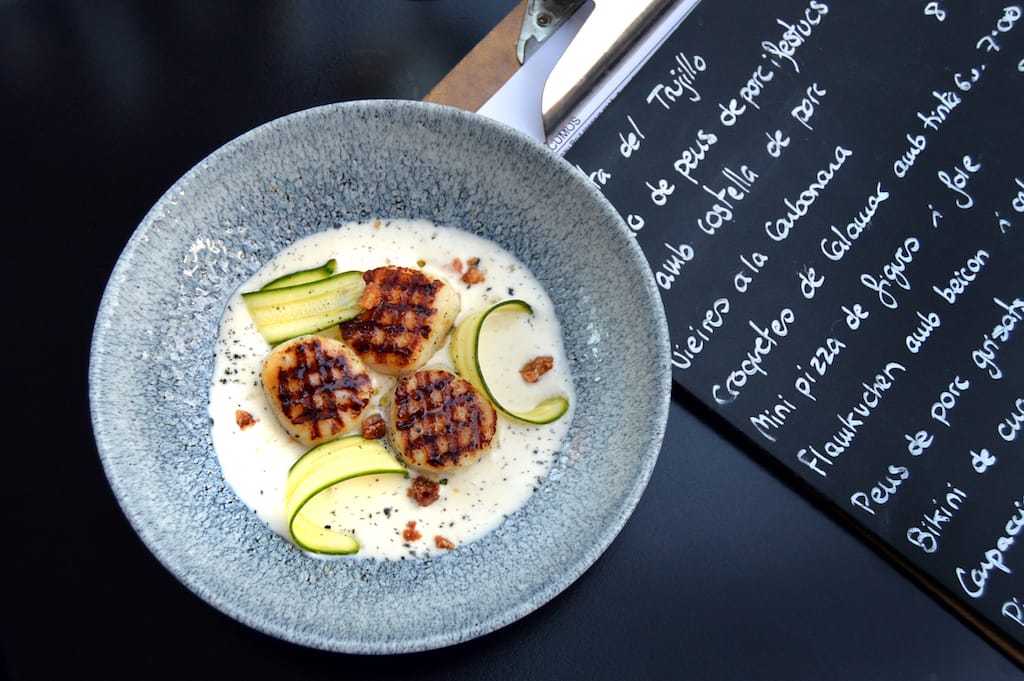At the beginning, Gelida was just a bodega where Joan Llopart Pujó, who came from the village of Gelida in Penedés, offered Catalan wine, cold cuts and a few traditional Catalan dishes cooked by his grandmother, like butifarra amb mongetas (boiled sausage with beans).
Llopart Pujó and his wife worked here until they were in their 80s. They were succeeded by their two children, Teresa and Alberto, who had always been involved in the family business. Though Teresa has since retired, Alberto continues to run the place alongside his wife, Luci, and their son, Gerard, as well as Luci’s brother, Josep. Laura and Santi, family friends who live nearby, joined the team in recent years as dining room manager and chef.
Opened in 1946, Gelida sits in Eixample, close to the Urgell metro station. In the 1960s and 1970s it provided food and drink to the many FC Barcelona fans who would wait for the stadium-bound bus that stopped just out front. That Barça connection persists, with club paraphernalia and photos plastered all over the place.
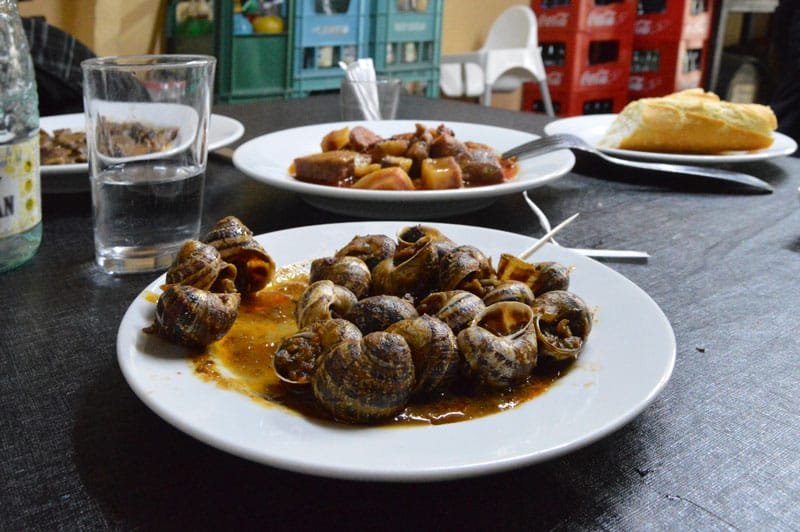
These days, Gelida is a modest yet charming old-school “all in one,” where you can buy bulk wine, have a drink with tapas or sit and enjoy a complete meal with dessert. There’s space for everyone: a street terrace for smokers and sun worshippers, plus three rooms inside, including the main bar-bodega area with numerous tables, a cozy smaller room and a third one in front of the kitchen that’s like an old family dining room, where the Gelida team eats lunch and large groups can dine together between cases of plastic bottles, the cupboards, fridges and pots.
The atmosphere is homey and pleasing, relaxed between meal times but hectic at lunch and dinner. The day begins early with esmorzars de forquilla, traditional hearty “fork breakfasts,” and the same dishes are offered all day. Customers can come in for a callos (tripe stew) fix whenever they need it. Gelida’s specialty is traditional Catalan cooking, particularly stews, but there are also a few salads, soups, grilled fish and salt cod dishes, plus tapas, omelettes and sandwiches.
Only a few ingredients and preparations change with the seasons, like rovellóns mushrooms in fall, some soups in winter and sardines in summer. As at most other traditional eateries in the city, some dishes are reserved for certain days. Paella, for example, is served on Tuesday (on Thursday in other restaurants), and here, it’s a surf-and-turf version with ribs, squid, mussels, prawns and peas. On Friday and Saturday, Gelida serves cargols (snails) stewed in a spicy sauce made with chorizo, ham and herbs. On Wednesday, there’s pig feet. The restaurant’s most iconic Catalan dish might very well be cap i pota, the famous cartilaginous stew made with beef head and leg, plus some chorizo and a powerful sofrito to make a dense and soft spicy asauce, perfect to dip bread suck your sticky finger.
Another great classic is fricandó, a medieval dish – a very different version of which turns up in French cooking – made with thin beef chops that are fried, coated in flour and then stewed with a sofrito of garlic, onion and tomato (the original went without), rancio wine (a fortified oxidized sweet wine) and moixernons (St. George’s mushrooms), the delicate fungi that give this recipe its distinctive flavor.
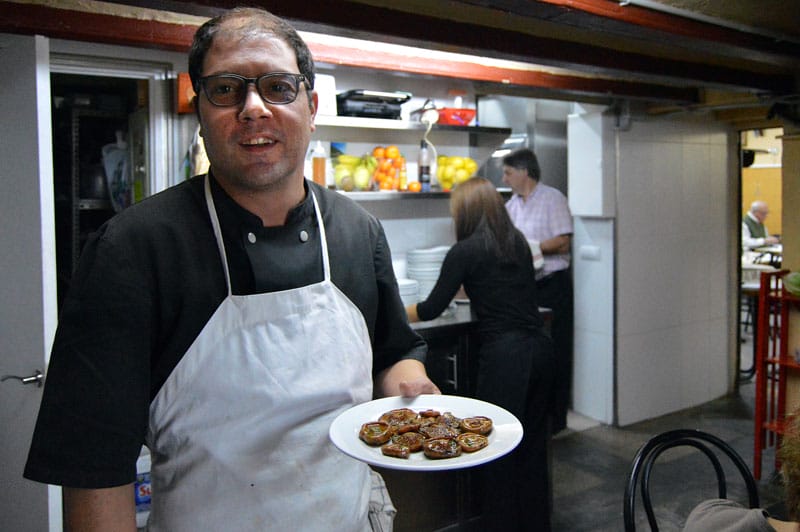
In the bodega (wine cellar), Gelida offers a few wines in bulk to take away or to drink at the table in porrón. This traditional bottle is meant for sharing: you pour directly into your mouth without touching the spout to your lips or pour into glasses using the larger aperture.
In all the years Gelida has been in the neighborhood, much as changed around it, but inside, the dishes, barrels and Barça mementos have remained the same. Gerard explained that some years ago, the bar was the main business, but after the recent economic crisis, the restaurant has proven more successful. Perhaps another reason for that is the increasing interest among young locals in the revival of their culinary roots and its healthy and delicious benefits for body and soul.
Customers vary a bit throughout the day; more retired men show up for the esmorzars de forquilla – they have the time – and neighborhood workers of all kinds come for lunch, while youngsters without children come in the late evening. For anyone seeking out their Catalan roots – real or aspirational – Gelida is the place to find them any time of day.
Published on December 02, 2016
Related stories
A stop on our new tour of the Sants district, coming soon!
December 6, 2017
BarcelonaBodega Bartolí opened in 1939 as a little bulk wine shop in Barcelona’s Sants neighborhood. Then everything changed for the bodega some 20 years later when a local client arrived with a stomachache. He asked a young Marina Dolz, who was minding the wine shop with her husband, if she could prepare some soup for…
July 16, 2014
BarcelonaIvan Rodríguez Vivancos is el tiet, Catalan for “the uncle,” a nickname given to him by the cooks who worked under him at renowned fine-dining restaurant La Terraza del Claris. Today, “El Tiet” is at the helm of his own restaurant, away from the stressful environment of alta cocina, in a place where he can…
January 17, 2020
BarcelonaA former village annexed to Barcelona in 1897, the city’s Sant Andreu district was a center of industrial development throughout the 20th century, becoming home to a large population of factory workers. Today, it is a quiet residential area that feels caught between its Catalan village roots and industrial past, with buildings being renovated and…







































